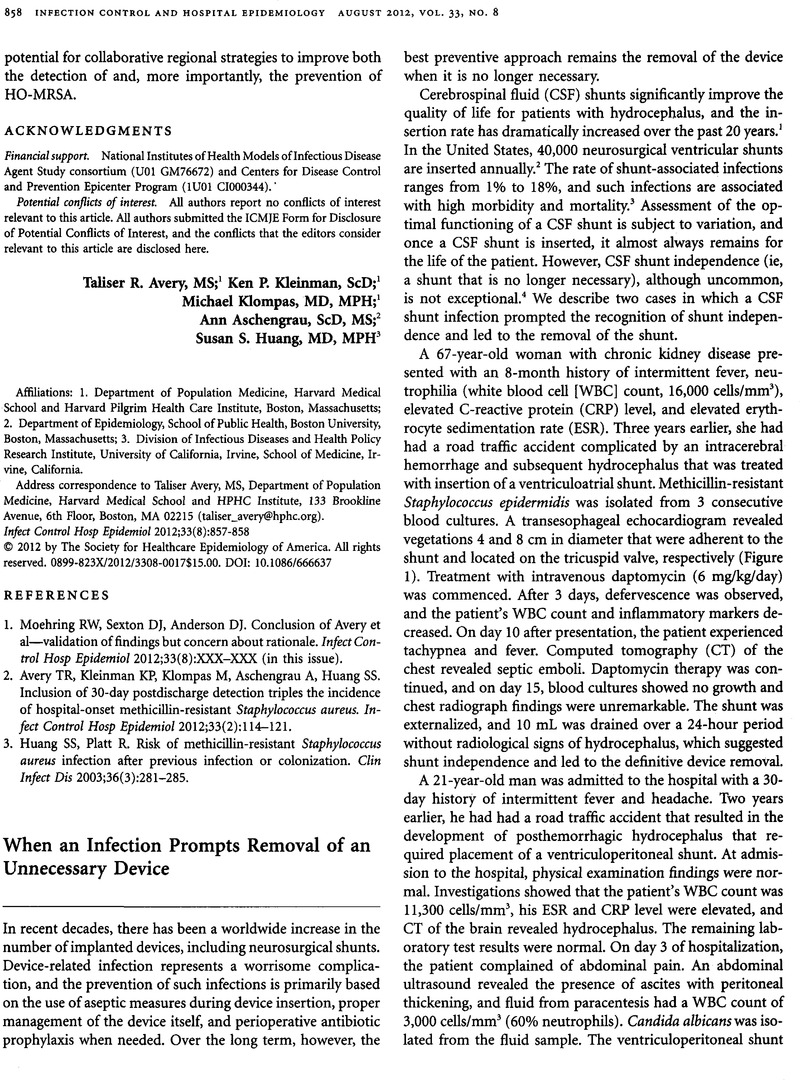No CrossRef data available.
Article contents
When an Infection Prompts Removal of an Unnecessary Device
Published online by Cambridge University Press: 02 January 2015
Abstract
An abstract is not available for this content so a preview has been provided. As you have access to this content, a full PDF is available via the ‘Save PDF’ action button.

- Type
- Letters to the Editor
- Information
- Copyright
- Copyright © The Society for Healthcare Epidemiology of America 2012
References
1.Curry, WT Jr, Butler, WE, Barker, FG2nd. Rapidly rising incidence of cerebrospinal fluid shunting procedures for idiopathic intracranial hypertension in the United States, 1988–2002. Neurosurgery 2005;57:97–108.CrossRefGoogle ScholarPubMed
2.Darouiche, RO. Treatment of infections associated with surgical implants. N Engl J Med 2004;350:1422–1429.CrossRefGoogle ScholarPubMed
3.Conen, A, Walti, LN, Merlo, A, Fluckiger, U, Battegay, M, Trampuz, A. Characteristics and treatment outcome of cerebrospinal fluid shunt-associated infections in adults: a retrospective analysis over an 11-year period. Clin Infect Dis 2008;47:73–82.CrossRefGoogle ScholarPubMed
4.Iannelli, A, Rea, G, Di Rocco, C. CSF shunt removal in children with hydrocephalus. Acta Neurochir (Wien) 2005;147:503–507.CrossRefGoogle ScholarPubMed


